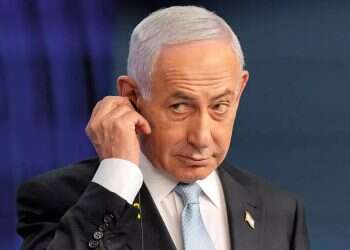The ring of Iranian President Ebrahim Raisi was discovered on Monday at the helicopter crash site in northern Iran, where he was killed along with other senior Iranian officials. Four years ago, when a similar ring was found on the finger of assassinated Qasem Soleimani, questions arose about the tradition.
Video: Raisi's ring found at the helicopter crash site/credit: Arab social media
Where did this tradition begin?
Wearing rings is an ancient Muslim tradition. It is said that the Prophet Muhammad wore at least one ring, if not more. Generally, wearing a ring has been known for thousands of years and is common to almost all cultures, including Jewish and Christian ones.
Are there differences between the sects of Islam?
Both Sunnis and Shiites wear rings, but each religious sect has different traditions stemming from the conflict between them. For example, Shiites wear a ring on the right hand - because the right side symbolizes the good in the world. In contrast, Sunnis wear it on the left hand and reject this belief. The Shiite belief has roots in Iranian culture, which was heavily influenced by Dualism (belief in both a good god and an evil god, Zoroastrianism).
Video: Moments Raisi's body is found / Credit: Tasnim
Which leaders wear them?
Today, mainly leaders from the Iranian Axis such as Supreme Leader Ayatollah Ali Khamenei, who is the highest authority in the Islamic Republic, Hezbollah Secretary General Hassan Nasrallah, Houthi leader Abd al-Malik al-Houthi and others practice wearing such rings.
What are they used for?
According to Islamic tradition, rings served Muhammad and the caliphs to sign letters and books. The seal was a symbol of the sect. It appears that today, Ayatollah Khamenei wears it as a symbol of his status as the new leader of Islam.
What stories are told about the rings?
One legend from the Islamic tradition tells of the ring of King Solomon, called Suleiman in Arabic. According to the legend, the ring descended from the heavens with the inscription "There is no other god but Allah" and gave him supernatural powers to subdue jinn (demons from Arab folklore). It should be noted that the Islamic tradition drew heavily from the Jewish tradition and features figures like King David, Moses, and others.




